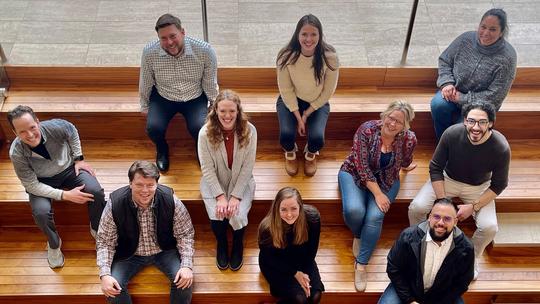
Kansas Leadership Center’s Lucy Petroucheva says, in vibrant rural entrepreneurial communities, leadership is “an activity, not a position.”
As the civic engagement manager at the nonprofit Kansas Leadership Center (KLC), Petroucheva is a believer in the power of people to shape the future of their own communities. In September, she co-moderated a panel on policy, rural entrepreneurial ecosystems, and how people can make progress toward a rich culture of entrepreneurship in their own communities during the 2022 Radically Rural Summit.
In the following Q&A, Petroucheva shares her vision for rural entrepreneurial communities, what barriers impede progress, and how a shift in perspective can impact communities and policy and better support entrepreneurs.
What does a vibrant rural entrepreneurial community look like?
Petroucheva: In a vibrant entrepreneurial community, experimentation is widespread – people are trying new things, solving problems in various ways, expressing themselves through their work and creating useful and interesting products and services for their community.
To cultivate this, communities need to be able to meet experimenters and problem-solvers where they are, ready to support them. That can’t happen without a tightly knit, coordinated network of people and resources – that’s critical.
In this ecosystem, people are connected to each other. They welcome new people and new ways of thinking. They work well together. They empathize, include others and work across differences. People know what resources exist in the community and how to access them. They are comfortable asking for help. They jump in to support one another and fill in resource gaps. Community members take ownership over their collective success, and instead of relying on authority figures to create top-down change, they practice leadership at every level. They don’t wait for formal authority figures before acting because they treat leadership as an activity, not a position. There is a bustling energy of possibility, optimism and self-sufficiency.
What barriers to entrepreneurship are unique or especially relevant to rural entrepreneurs?
Petroucheva: During our listening tour in rural communities across the Heartland, we heard about some of the more frequently discussed challenges: geographical distance from resources, attraction and retention of talent, smaller markets with limited opportunity, and competition with larger cities in terms of entertainment and quality of life for residents, potential entrepreneurs and their families.
But throughout the tour, I was most intrigued by the themes connected to perception, culture and receptivity to change. Community members explained that it can be hard to manage fear of change, diversity and loss. We heard about “anti-change naysayers” who are reluctant to welcome new ideas and entrepreneurs, and we heard concerns about the perception from outside of the community that rural communities are not attractive places to work or build a company. We heard deliberation about how to treat newcomers – should newcomers have to adapt to the status quo culture, or should that culture adapt to them? Understandably, entrepreneurs struggle to innovate and build businesses in this ambivalent environment. I think people in these communities are hungry to embrace new ideas and ways of operating, but they need support through this change.
How do we shift the perspective of ecosystem building as an adaptive challenge?
Petroucheva: There is a gap between the technical work being done to support entrepreneurship and our aspirations for the future of our rural communities. We begin to bridge it by working together – listening to the hopes and concerns of community members and collaborating to find paths to achieve goals.
Making progress on adaptive challenges usually requires people to learn new ways of doing things, change their attitudes, values and norms and adopt an experimental mindset. Leadership, as we see it, is mobilizing people to make progress on these persistent, adaptive challenges.
What more should policy be doing to support rural entrepreneurs in America today?
Petroucheva: I know it can be easy to focus policy on technical challenges, but sometimes that isn’t enough for deep human change. I wonder how policies support investment in interventions to make progress on less technical, more adaptive parts of entrepreneurial ecosystem-building.
If we know that entrepreneurs need strong ecosystems, what supports exist to build networks and trust among community members? What about broadening the accessibility and inclusivity of resources, providing leadership development to people in all areas, or strengthening mentoring and succession planning? Is there funding available to design and scale interventions to make progress on this type of systems and culture change work?
We also know policy at the local, state and national level impacts people and communities differently, and we should explore the work local authorities can do to make the impact of policy more equitable and effective.
In 2021, the Kansas Leadership Center (KLC) and the Kauffman Foundation launched Heartland Together, a partnership to encourage local business growth in towns and cities across the American heartland (Iowa, Kansas, Missouri and Nebraska). Learn more here.
The Ewing Marion Kauffman Foundation is a private, nonpartisan foundation based in Kansas City, Missouri, that seeks to build inclusive prosperity through a prepared workforce and entrepreneur-focused economic development. The foundation uses its $3 billion in assets to change conditions, address root causes and break down systemic barriers.